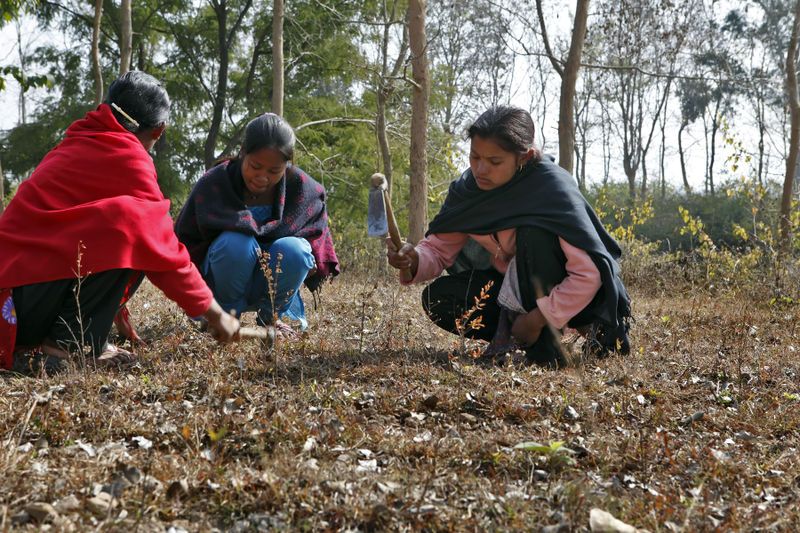To the casual passerby, the henna field is almost invisible. The plants, which take up to eight months to grow, look like dark brown, dead twigs.
But to the nine girls who started the henna co-op last April, amidst rice paddies in the Terai plains of southwestern Nepal, the precious plants have liberated them from a life of slavery.
Until they began farming and selling henna for hair dye and body painting, the girls were kamlaris – female child servants in higher caste homes. They were sold by their parents for the equivalent of $50 a year in a tradition that was formally abolished in 2006 by the Nepali government but continues among destitute ethnic Tharu sharecropper families.
Kamlaris typically are sold at age five or six, and spend their childhoods cooking, cleaning and babysitting instead of going to school. Treated as untouchables by their "employers," kamlaris are often physically abused, forced to eat table scraps and confined to the homes they serve. In the worst cases, they are raped or simply never heard from again.
San Francisco Chronicle photographer Carlos Gonzalez and I flew from Kathmandu to the Dang district of southwestern Nepal, and took a 4WD drive over dirt roads, small boulders and streams and walked over the small mud berms between the rice paddies to meet Manju Chaudhary at the henna farm. She was six when her family sold her as a kamlari. Now 18, she was invited to become part of the henna co-op by Friends of Needy Children, one of several nonprofits that is working to truly abolish the kamlari system.
One of the main reasons Tharu parents sell their daughters is because they too are in debt, renting crops and mud huts from landlords who immigrated from the hills 50 to 60 years ago and usurped Tharu land. In a history similar to the Native Americans in the United States, the illiterate and trusting Tharu were easily talked out of their land in exchange for trinkets: bottles of alcohol, a few thousand rupees, a farm animal. Debts have since been passed to father and son, and the Tharu sometimes resort to selling their daughters to landholders.
Friends of Needy Children, along with a handful of other Nepali nonprofits, helps Tharu form microbusinesses, such as the henna farm, so they can one day become self-sufficient.
"This is a better life, this allows me to help my family," said Chaudhary, who earns as much in a month as her family was paid for an entire year for her domestic services.
Their co-op produces 300 kilos of henna a year. The female farmers earn 80 rupees per kilo, a little more than a dollar. They also sell the henna seeds, and pick up more work during the wedding season painting henna hand designs on brides. Some offer henna decoration at beauty parlors. Henna is also used as a hair dye and turned into a powder and used as a scalp treatment for dandruff.
Chaudhary used a hand tool to break up the dry ground around her section of henna, and carefully pulled weeds away from her foot-tall plants. Seven girls crouched and worked together, chatting and laughing as they made their way down the row. All of them used to be bonded servants until the nonprofit steered them into vocational education.
In total, 1,600 former kamlaris are now farming henna instead of cleaning houses, said Fakala Tharu, who manages the vocational education program for Friends of Needy Children.
Other former girl slaves are sewing saris and other Nepali garments, learning to become accountants, operating small sundry shacks, driving electric three-wheel rickshaw taxis, or making decorative bamboo handicrafts.
The henna farmers will be able to reap five or six harvests from the co-op plot. A nonprofit leased the land to Friends of Needy Children for free for a decade.
"We have to henna plots, and after 10 years, we will have many more," Tharu said.
